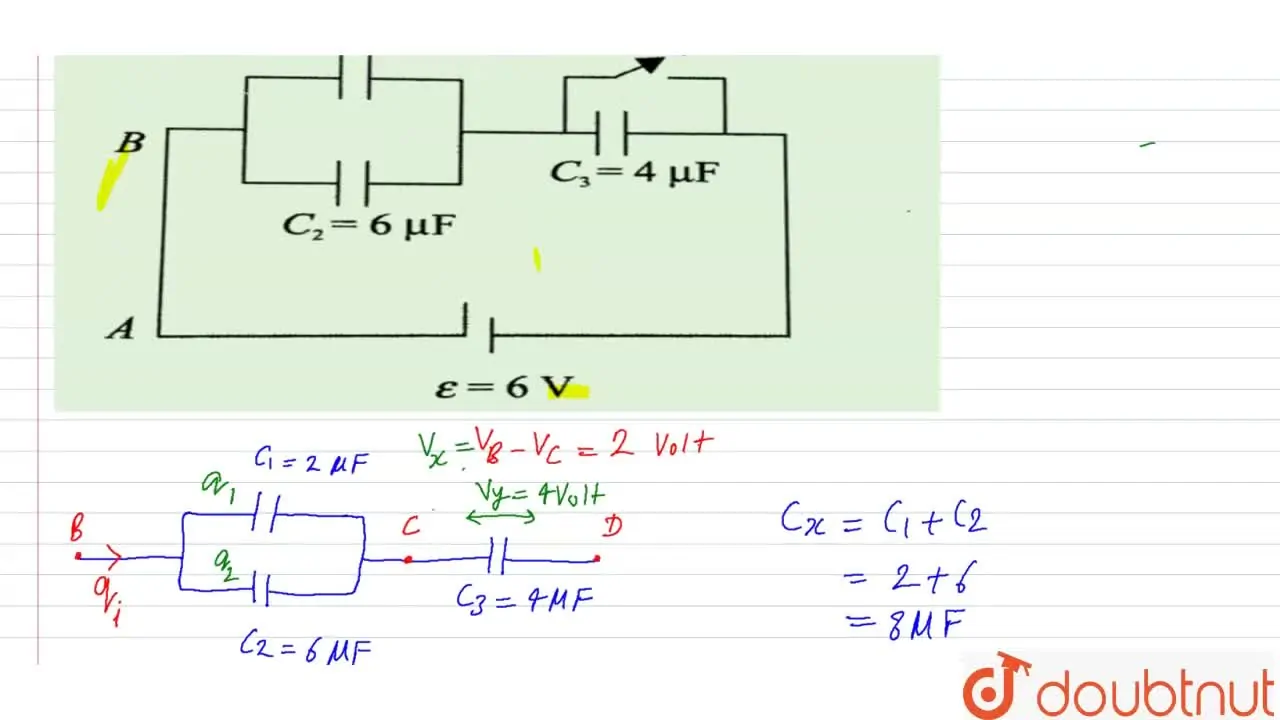In, all the capacitors are in steady state initially.
i. What is the charge flowing through the switch when it is closed?
ii. What is the charge flowing section AB?
iii. What is the work done by the battery?
iv. What is the heat produced when (S) is closed?
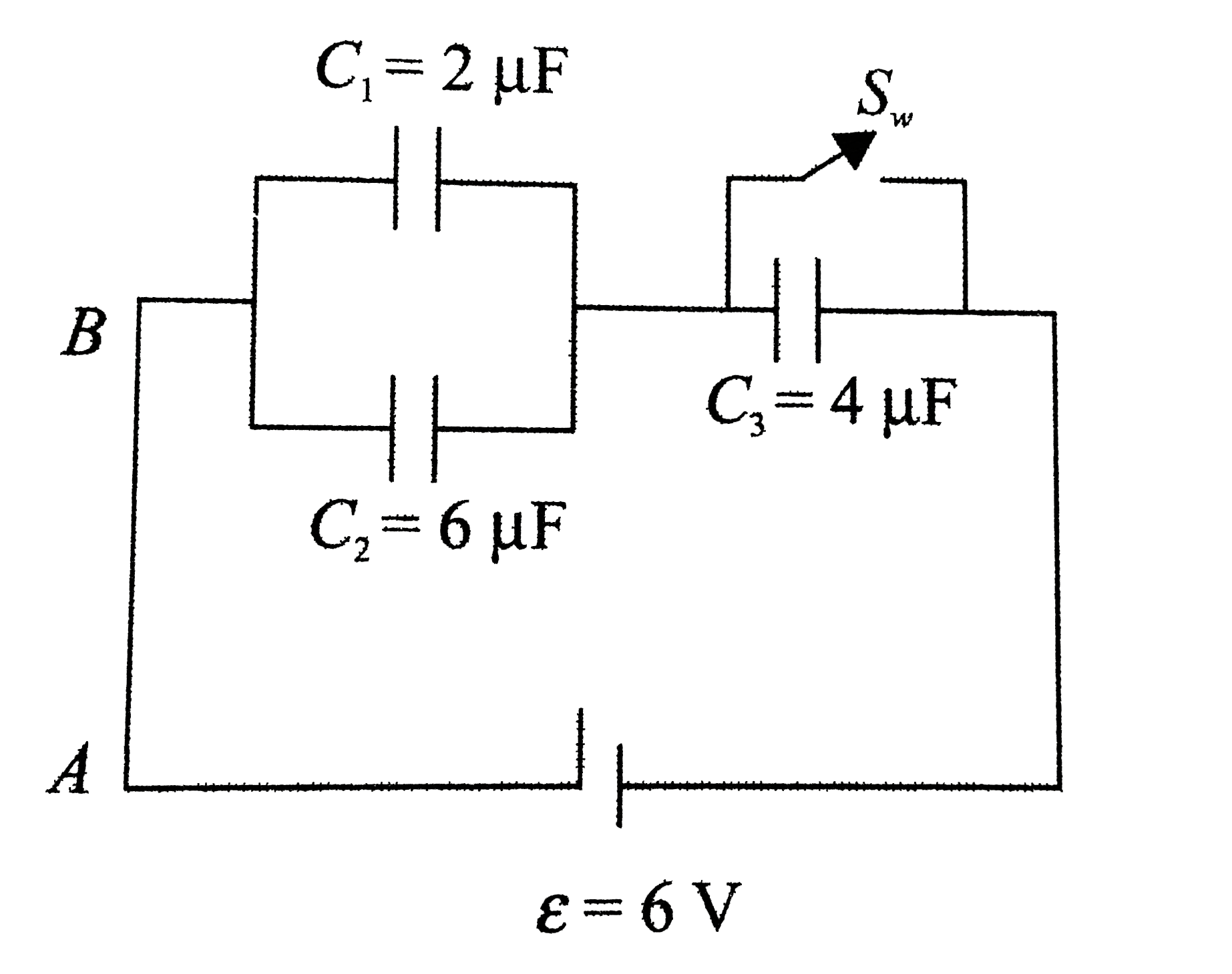 .
.
Before closing the switch,
4x+(x−6)2+(x−6)2=0 or x=4V
∣∣Q4μF∣∣=16μC,∣∣Q2μF∣∣=4μC
∣∣Q6μF∣∣=12μC
When switch Sw is closed, the 4μF capacuit is short-circuited, and the potential difference across it becomes zero. The circuit after closing the switch is shown in
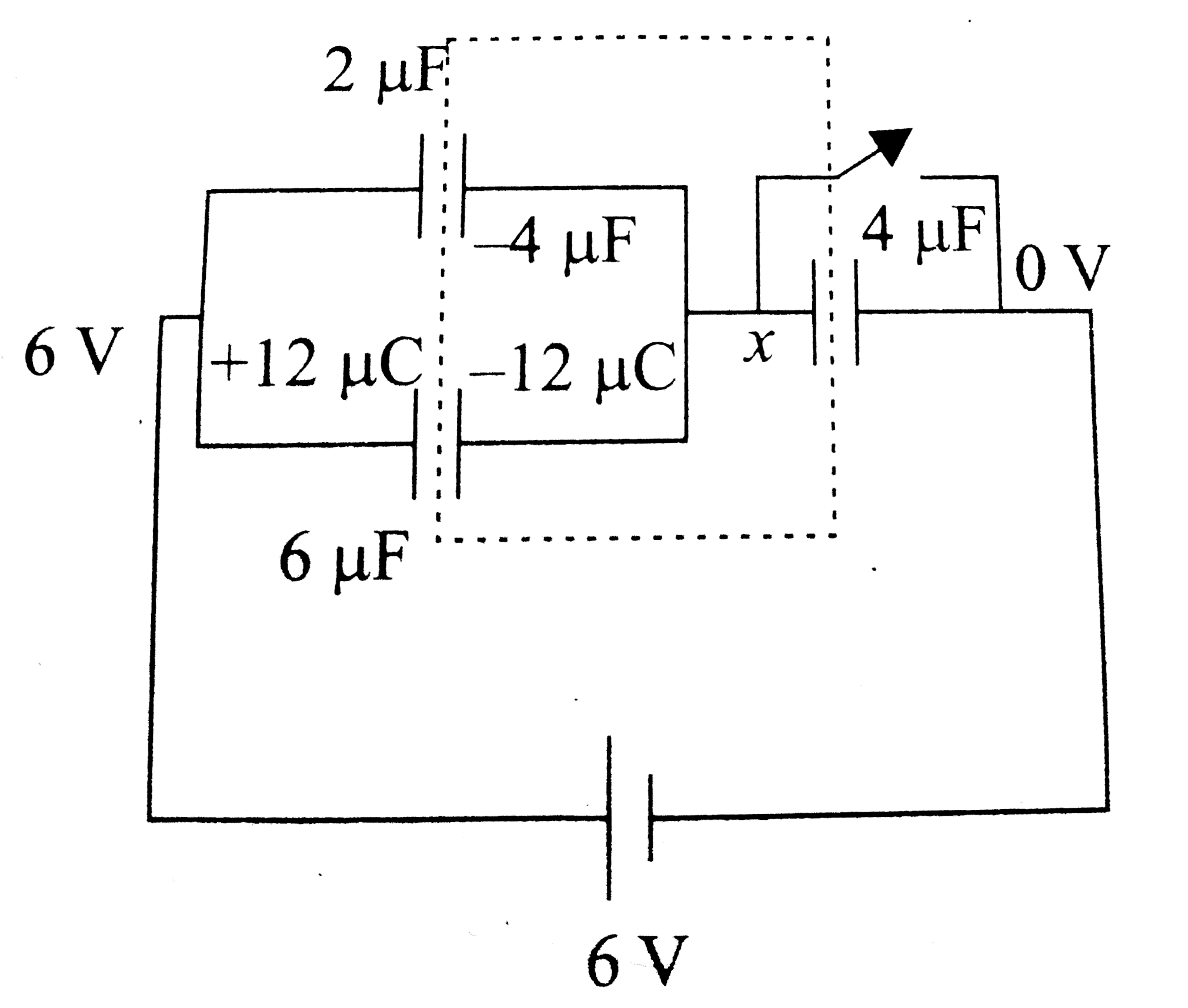
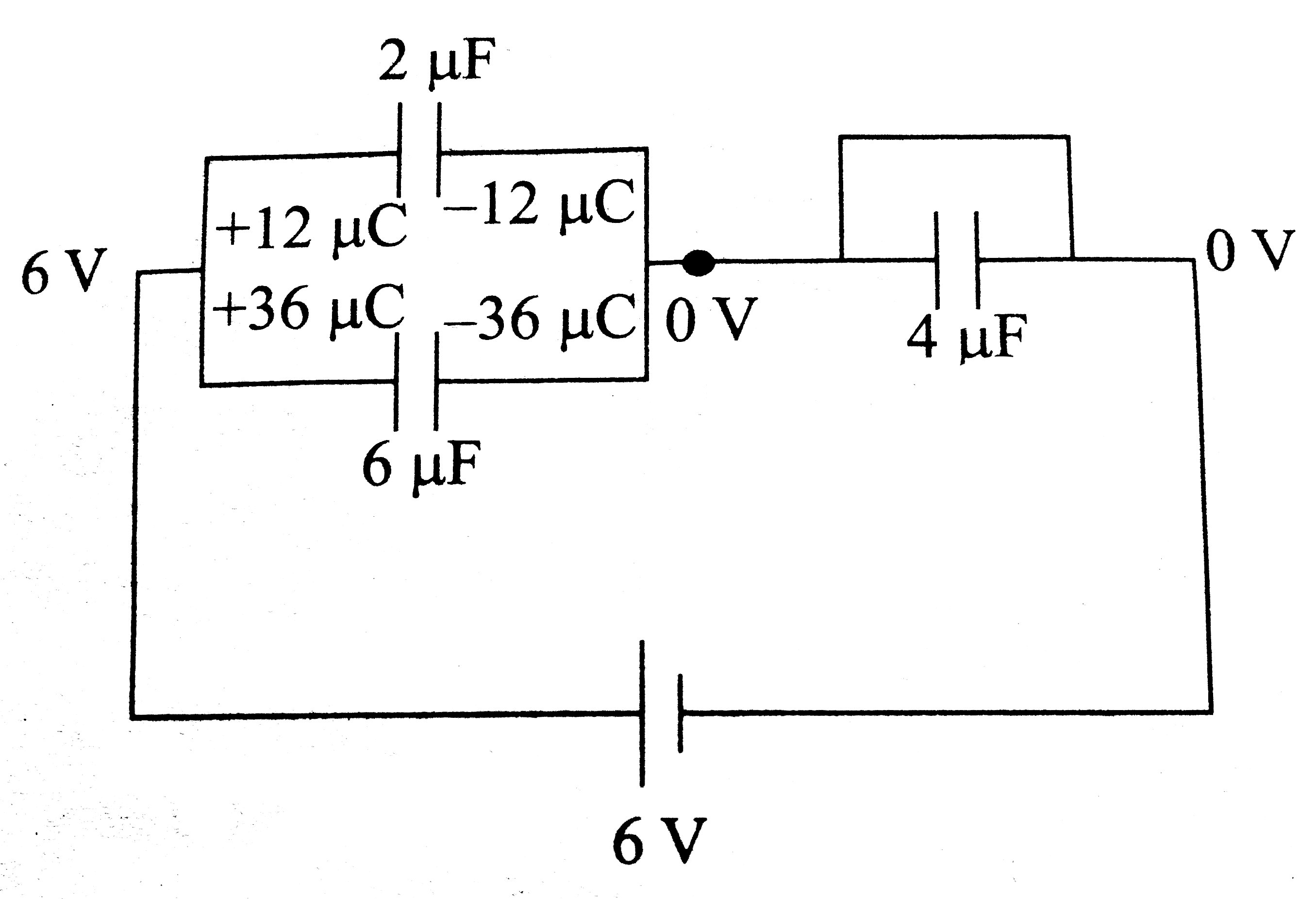 .
.
 .
.
shown the charges coming and going out of the capacitors. So the charge through section AB is 32μC, and the charge through the switch is 48μC. When the switch is closed, 16μC charge from the left plate goes the switch is charge passing through th battery is 32μC. so the work done by the battery is
Wbattery=ΔqV=(32μC)(6V)=192μJ
Heat produced is
H=Wbattery−ΔU=Wbattery−(UfUi)
Uf=12(2)×62+12(6)(6)2=144μJ
and Ui=124(4)2+12(8)22=48μJ
H=[192−(144−48)]μJ=96μJ.
Related Playlists
- BOOK - CENGAGE PHYSICS ENGLISHCHAPTER - CAPACITOR AND CAPACITANCEEXERCISE - Exercise 4.113videos
CAPACITOR AND CAPACITANCE
- BOOK - CENGAGE PHYSICS ENGLISHCHAPTER - CAPACITOR AND CAPACITANCEEXERCISE - Exercise 4.232videos
CAPACITOR AND CAPACITANCE
- BOOK - CENGAGE PHYSICS ENGLISHCHAPTER - CAPACITOR AND CAPACITANCEEXERCISE - Integer5videos
CAPACITOR AND CAPACITANCE
- BOOK - CENGAGE PHYSICS ENGLISHCHAPTER - ATOMIC PHYSICSEXERCISE - ddp.4.315videos
ATOMIC PHYSICS
- BOOK - CENGAGE PHYSICS ENGLISHCHAPTER - CENGAGE PHYSICS DPPEXERCISE - subjective type51videos
CENGAGE PHYSICS DPP
Similar Questions
The flow of charge through switch S if it is closed is
 View Solution
View SolutionConsider the situation shown in the figure. The switch S is open for a long time and then closed and again steady state reached then
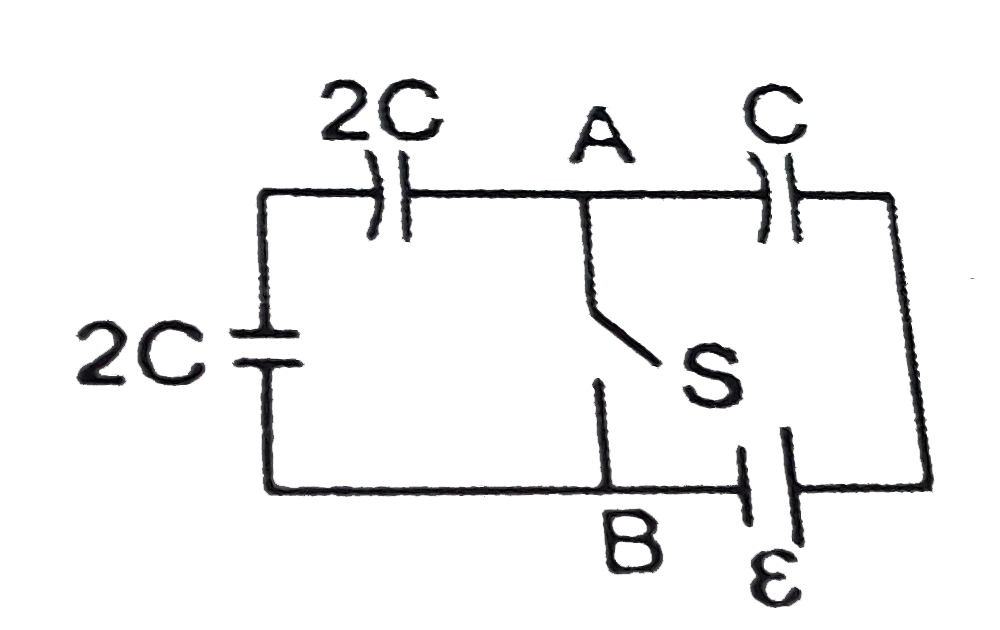
(a) Find the charge flown through the battery after the switch S is closed.
(b) Find the charge flown through the switch S from B to A.
(c) Find the work done by the battery after the switch S is closed.
(d) Find the change in energy stored in the system of capacitors.
(e) Find the heat developed in the system after the switch S is closed.View SolutionIn fig. A2.27, the charge that flows from P to Q when the switch S is closed is
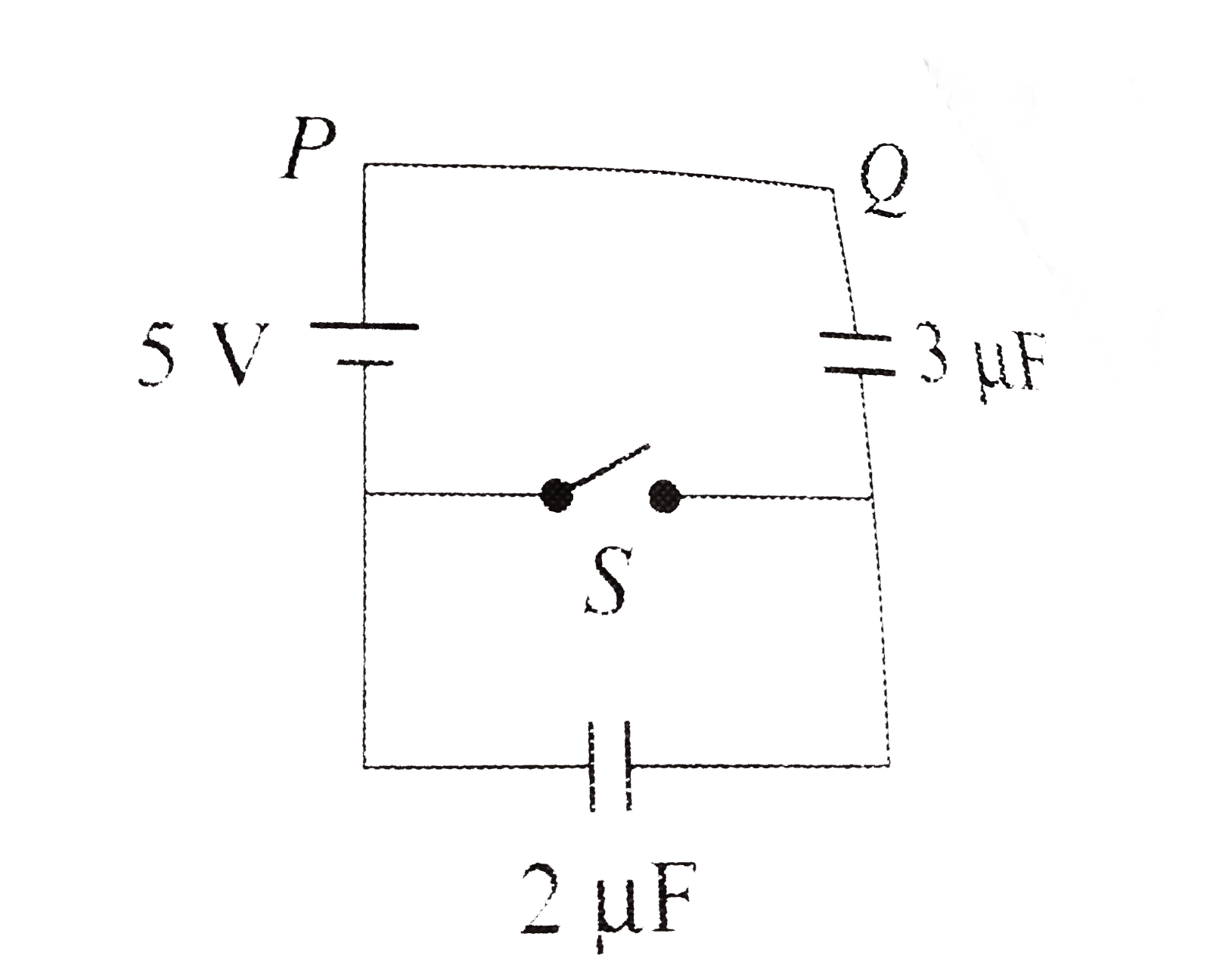 View Solution
View SolutionIn fig , after closing switch S, what is the change in curent flowing through A? the battery is ideal.
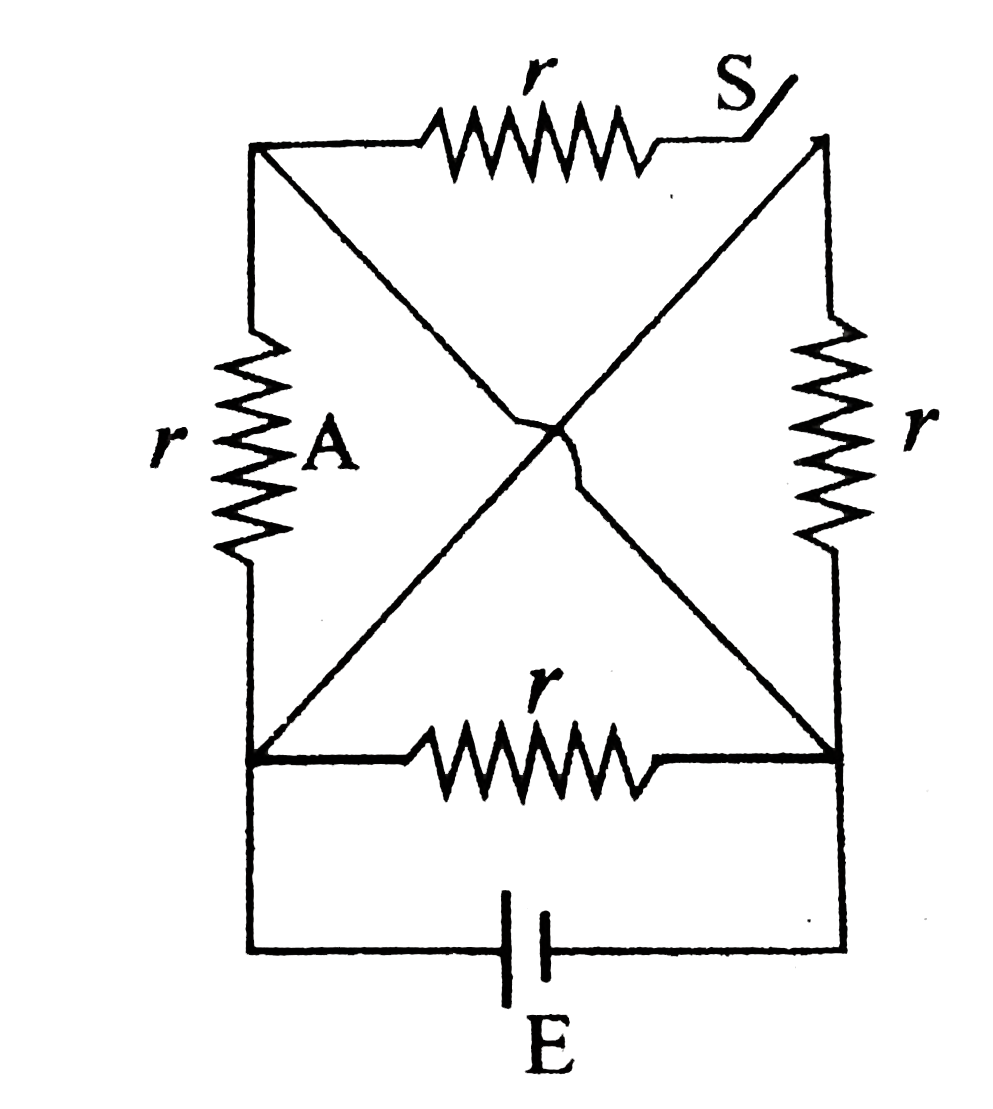 View Solution
View SolutionConsider the circuit shown in figure, after switch S is closed.
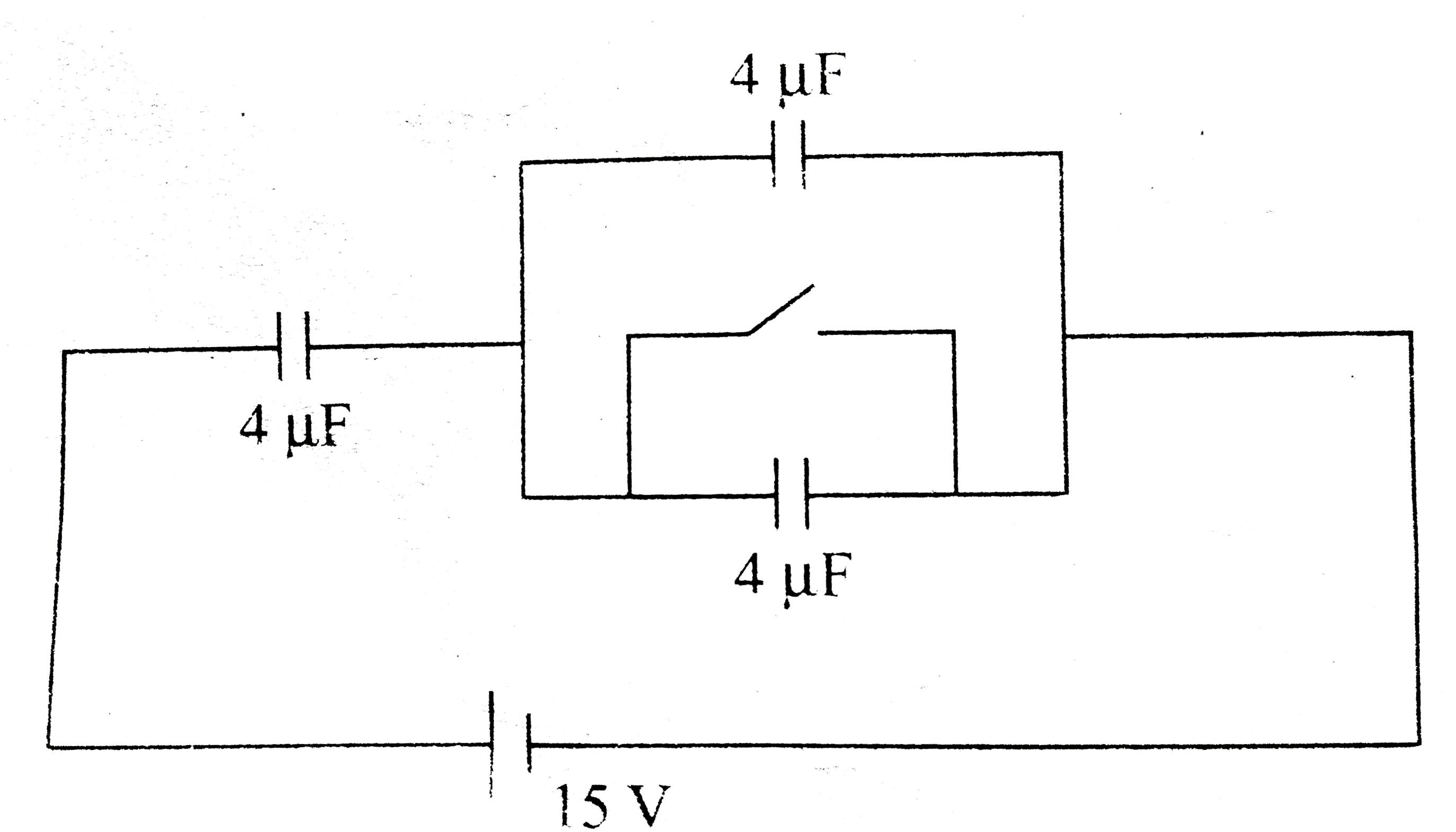
What amount of charge will flow through the switch?View SolutionIn the given circuit diagram, find the charges which flow through directions 1 and 2 when switch S is closed.
 View Solution
View Solution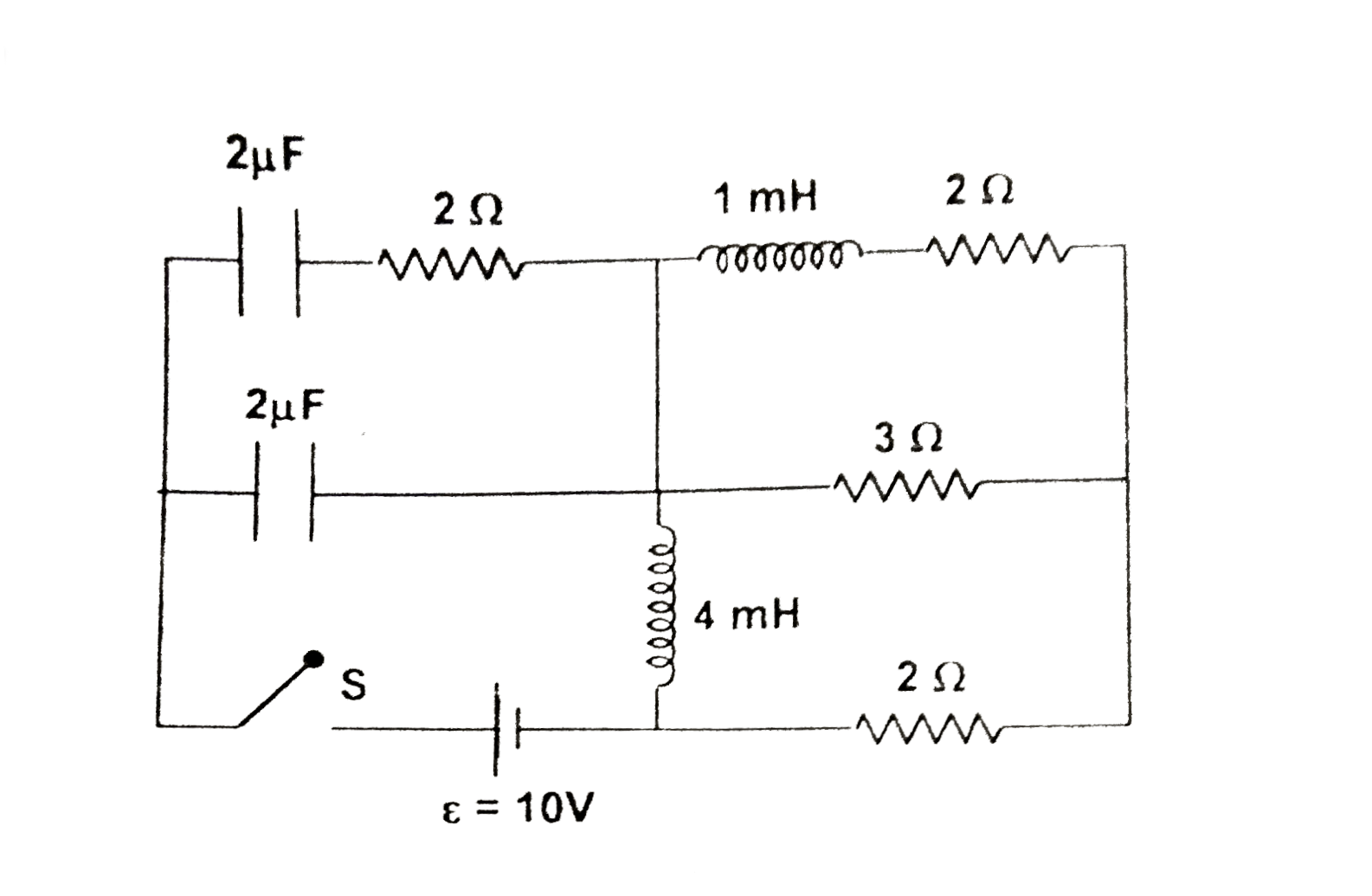
In the circuit shown, all the capacitors are initially uncharged. The current through the battery just after closing the switch 'S' isView SolutionInitially the circuit is in steady state. When the switch S is closed, the heat generated in the circuit will be
 View Solution
View SolutionTwo capacitors A and B are connected in series with a battery as shown in the figure. When the switch S is closed and the two capacitors get charged fully, then
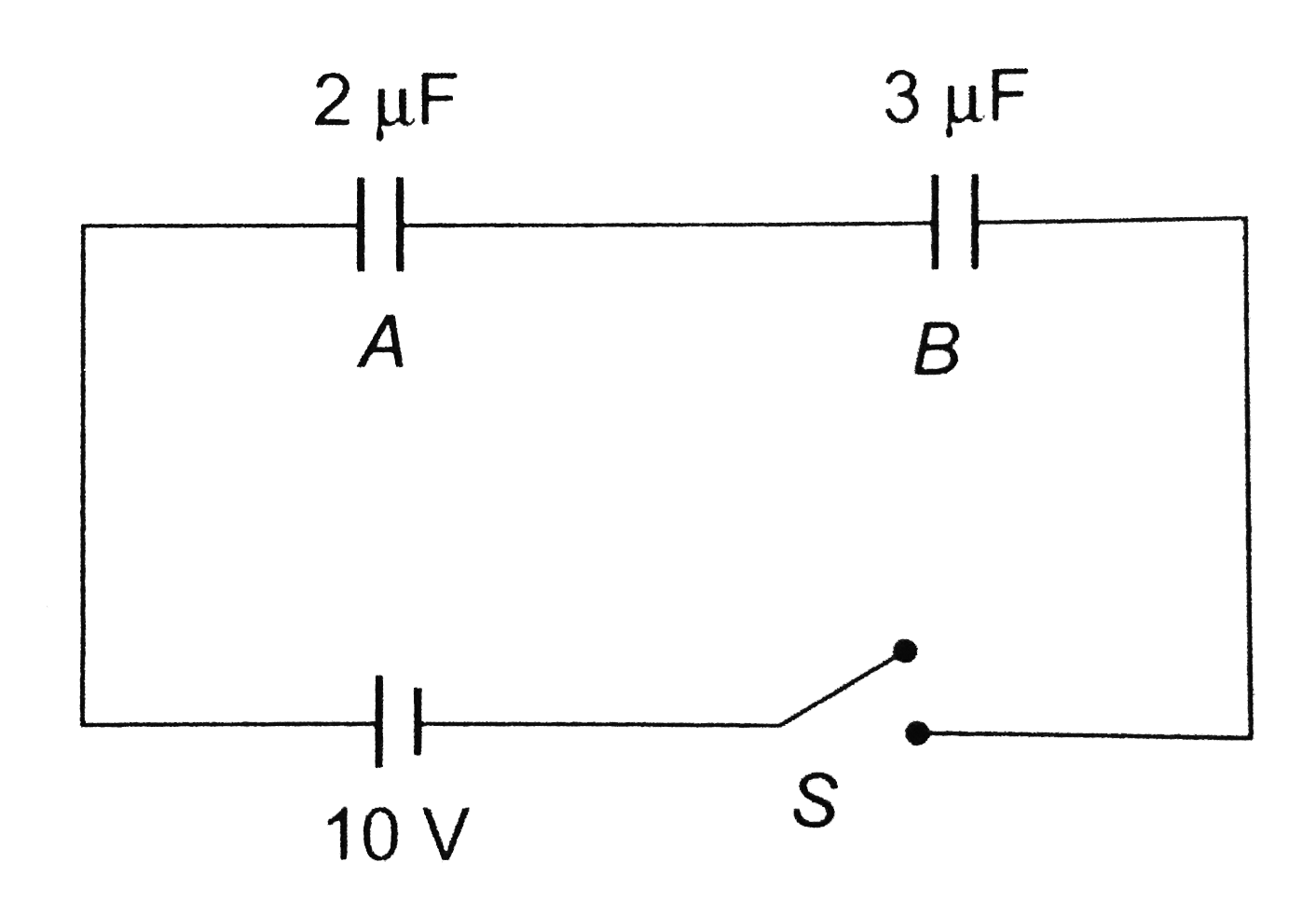 View Solution
View SolutionTwo capacitors A and B are connected in series with a battery as shown in the figure. When the switch S is closed and the two capacitors get charged fully, then
 View Solution
View Solution

